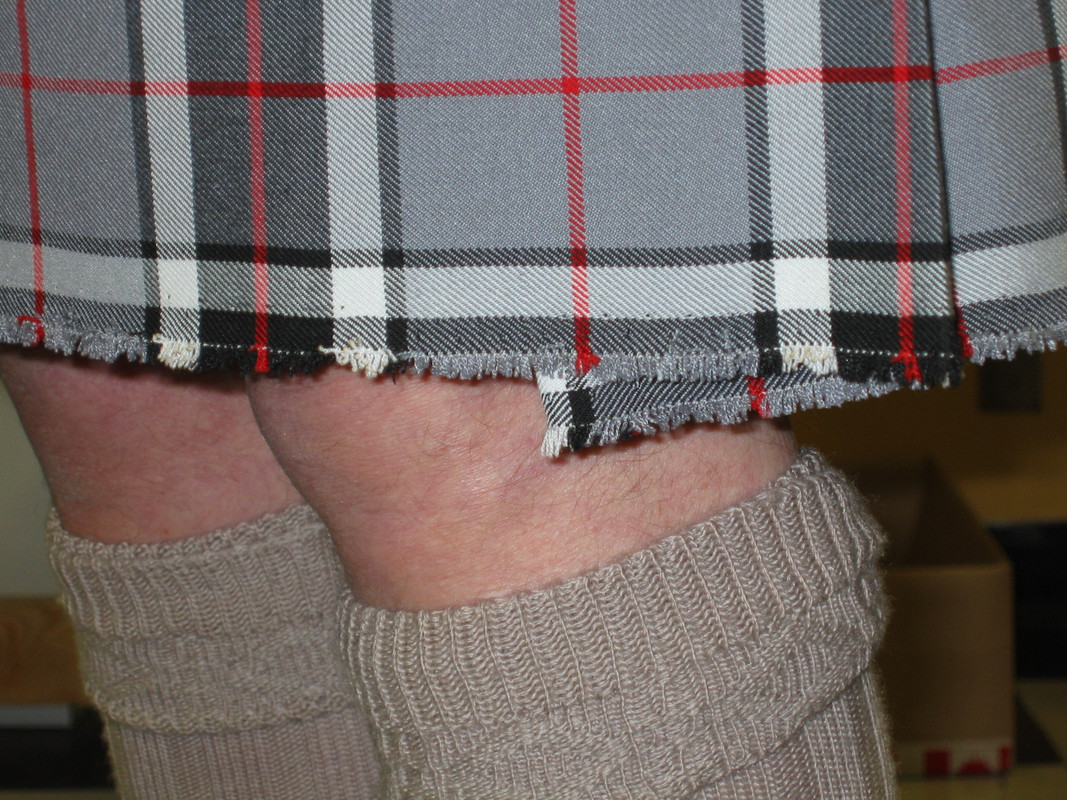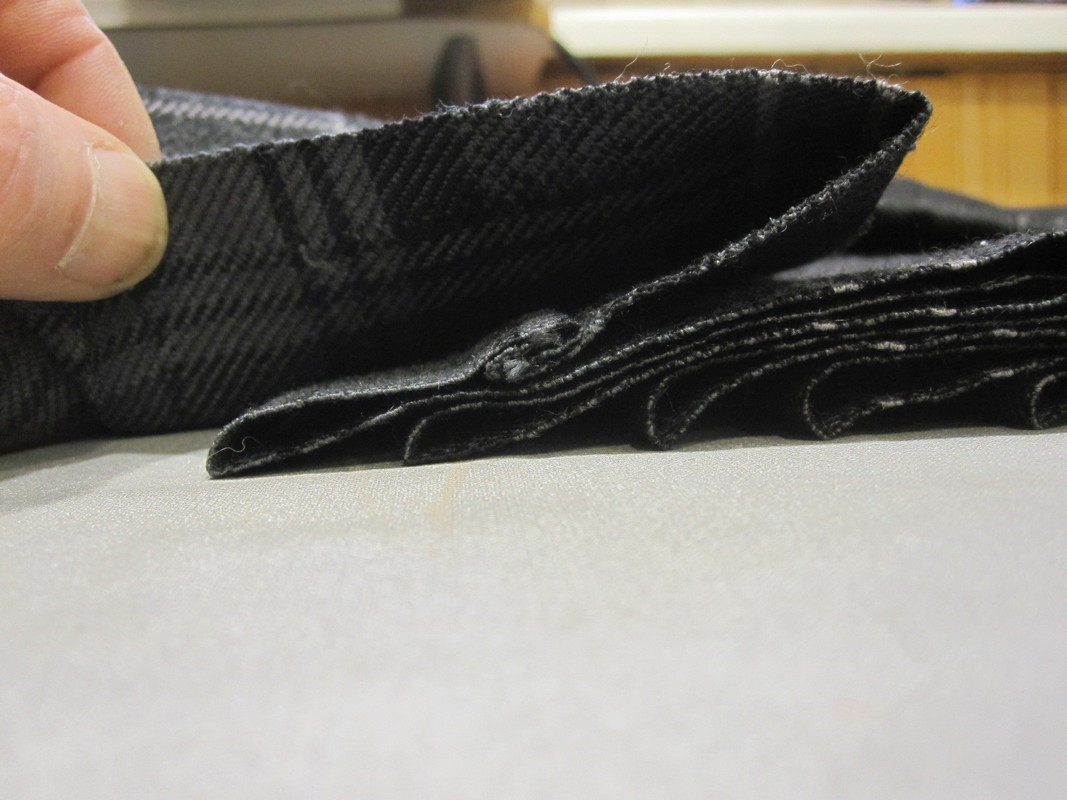|
-
5th February 20, 03:24 PM
#1
MacPherson's of Edinburgh, Part II
I got my kilt in November and have enjoyed it at several events.

Curious about some construction details such as:
These uneven "tucks" at the hem in two places, possibly to straighten the overall hem?


this seam at the center of the pleats in the back. This is not one piece of material pleated, but rather two pieces seamed together, then pleated.
Any thoughts?
Thanks

Last edited by deervin77; 5th February 20 at 03:26 PM.
-
-
5th February 20, 03:28 PM
#2
Both the "tucks" and vertical seam are normal.
The tuck is to keep the back apron pleat from hanging below the front and the seam is from taking a double width piece of tartan and ripping it into two pieces to make the final length for the kilt.
-
The Following 2 Users say 'Aye' to Bad Monkey For This Useful Post:
-
5th February 20, 03:30 PM
#3
Overall enjoy the kilt very much, particularly the weight of the fabric.
-
-
5th February 20, 04:10 PM
#4
I think you will find that the small 'tucks' are in the deep and reverse pleats just behind the apron edges. As the apron edges are tapered to be wider at the bottom than at the top, if you do not tuck up a small portion of the deep and reverse pleat, that part will hang down and be unsightly.

These small hems are call "apron tucks" and are perfectly normal.
Most kilt fabric is woven and purchased "double-width" This is the width of the loom and this width of finished fabric with a Selvede on both long edges is between 54 to 60 inches.
So most kiltmakers purchase 4 yards of "double-width" fabric - then cut or rip it down the middle - seam the two pieces - to create the full 8 yard length needed to make the kilt.
Your kilt has one way of joining the two ends. This is one method used on machine stitched kilts where the raw edge is run through a serger machine to prevent the edges from fraying - and then sewn together with a straight stitch sewing machine.
This is not to say that all machine stitched kilt will have the join sewn this way. An alternate method to machine stitch the join is almost invisible.

Most hand stitched kilts will have the join done using what is called a "French Flat Fell" or simply a "Flat Fell" seam.


This type of join requires skill and planning to do well, but is the preferred method of the premium kiltmakers. If planned and executed well, this method retains the Sett of the fabric so that the pleat where the join is, is the same depth as the others, the join is almost invisible, the edges are fully finished and cannot fray, and there are no fabric left hanging that can droop down and be seen when the kilt is worn.
It also takes more time to do, so it is common to find many kilts today using the faster, easier method, that does not require the higher level of skill.
The joining of the two pieces of fabric from the ripped or cut double-width piece is perfectly normal though.
Last edited by Steve Ashton; 5th February 20 at 04:20 PM.
-
The Following 7 Users say 'Aye' to Steve Ashton For This Useful Post:
-
6th February 20, 09:48 AM
#5
-
 Posting Permissions
Posting Permissions
- You may not post new threads
- You may not post replies
- You may not post attachments
- You may not edit your posts
-
Forum Rules
|
|






















Bookmarks